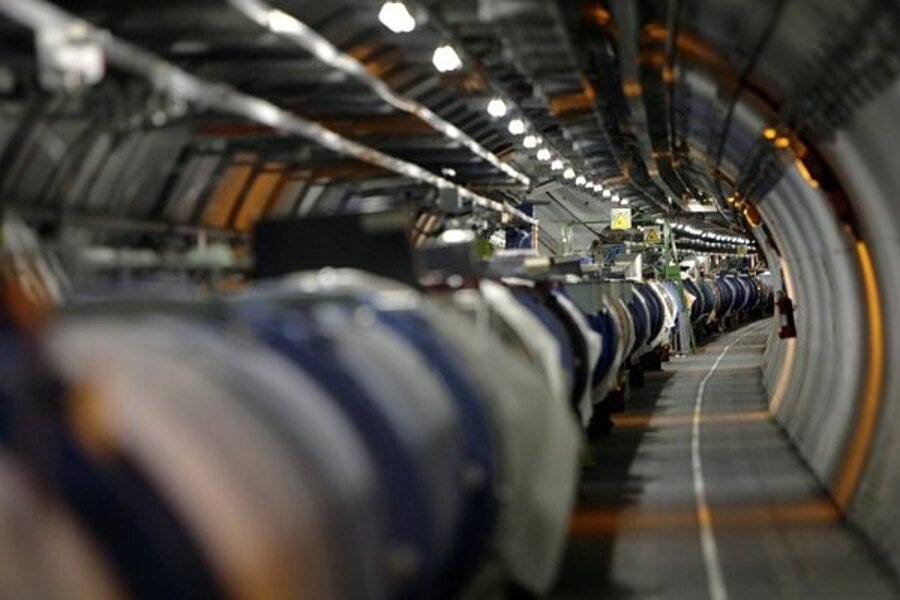CERN's LHC 'big bang' machine back in the particle biz -- sort of
The Large Hadron Collider, a particle collider under the Swiss-French border, hasn't recreated the big bang yet, but it has just experienced the little whoosh.
Scientists at the LHC's home, the European Organization for Nuclear Research (CERN), announced today they've sent a low-energy beam of protons nearly all the way around the race track for subatomic particles. In one direction only. But it shows that the race track, roughly 17 miles in circumference, is ready for the next milestone -- a fully circulating beam of protons, expected next month.
The test took place last week, according to a release from CERN.
The LHC has been offline for a year following an electrical failure between two magnet segments. The failure led to a catastrophic leak of liquid helium.
The liquid helium is critical. It cools the collider's superconducting magnets to the point where they lose all resistance to electricity. This in turn allows the magnets to generate far more powerful magnetic fields than ordinary magnets of the same size.
The magnets are used to steer beams of particles in opposite directions around the collider until they are brought together in a collision. Magnets also keep the beams tightly focused to enhance the likelihood that a sufficient number of collisions will take place.
Those collisions are expected to yield evidence for a particle called the Higgs boson -- which the maker-and-white-board theorists say imparts mass to other particles. And the physics teams say they hope to finding evidence for other, more bizarre particles that could help explain weird things folks have detected looking at the large-scale universe. Things like dark energy and dark matter, for instance.
Other areas physicists hope to explore with the LHC: Extra dimensions to the universe that some theories project beyond the four dimensions humans can directly experience -- time, and the three dimensions physical objects occupy; and theories that seek to show how the four basic forces of nature -- electromagnetism, the strong force (binding particles in an atom's nucleus), the weak force (governing radioactive decay), and gravity -- are the chilled out manifestations of one over-arching force that prevailed at the dawn of the universe.
Scientists have already shown that the first three of those forces can in effect be unified. Gravity remains the lone holdout.





